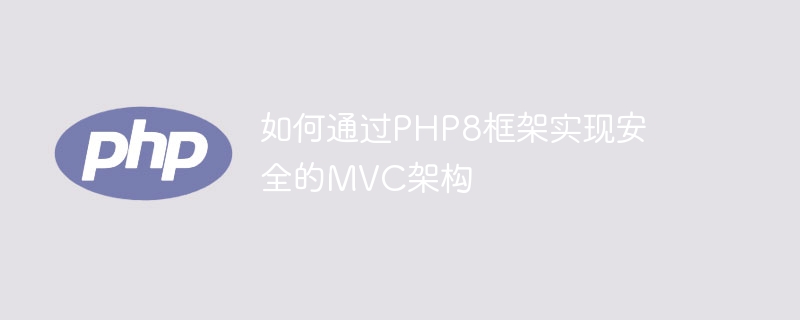

How to implement a secure MVC architecture through the PHP8 framework
With the rapid development of the Internet, Web applications play an increasingly important role in our lives. However, as the complexity of web applications increases, security issues have become a critical issue that cannot be ignored. In order to protect the data security of applications and users, we need to adopt appropriate architecture and technical means to ensure the security of applications. In PHP development, adopting MVC architecture is a common practice. In the PHP8 framework, we can use its powerful functions and features to implement a secure MVC architecture.
MVC (Model-View-Controller) architecture is a pattern for designing web applications. It divides the application into three parts: Model, View and Controller. Among them, the model is responsible for handling data storage and logic, the view is responsible for displaying data and user interface, and the controller is responsible for processing user requests and business logic. This layered structure can help us improve the readability and maintainability of our code, while also helping to achieve application security.
In the PHP8 framework, we can implement a secure MVC architecture through the following steps:
The above are some key steps and precautions to implement a secure MVC architecture through the PHP8 framework. By rationally utilizing the functions and features of the PHP8 framework, we can more easily implement secure web applications and provide users with a safe and reliable experience. However, we also need to always pay attention to security trends, promptly update the framework and adopt the latest security technologies to deal with growing security threats.
The above is the detailed content of How to implement a secure MVC architecture through the PHP8 framework. For more information, please follow other related articles on the PHP Chinese website!